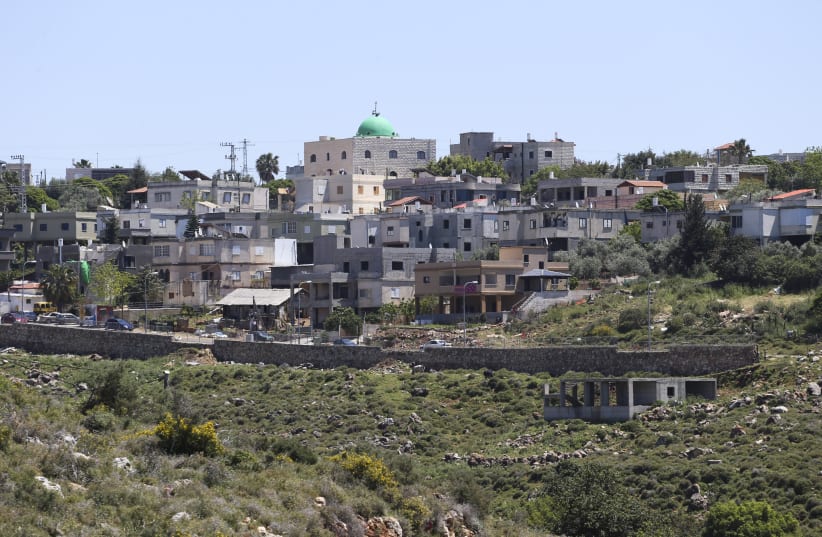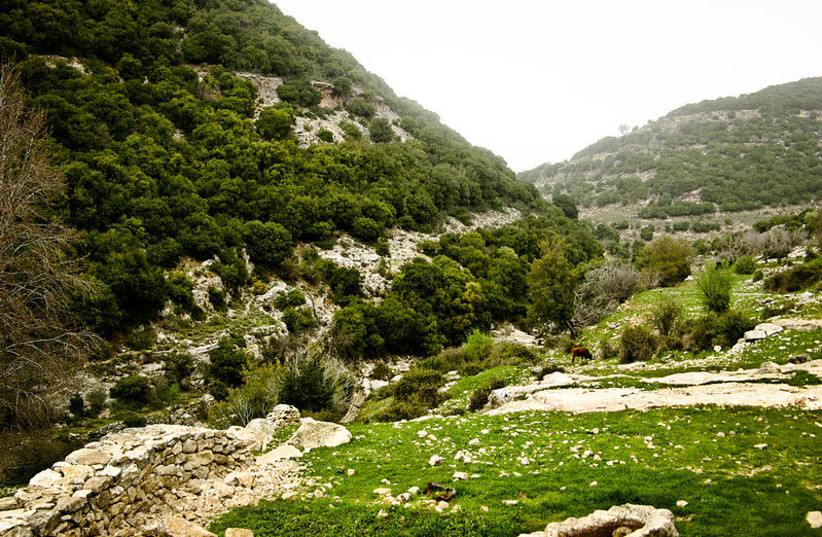Galilee Bedouin claim that the National Parks Authority is ignoring their traditional heritage and rights with its plan for a nature reserve on land that the Bedouin have used to graze their livestock since Ottoman times.
At a meeting scheduled with the Parks Authority on September 13, Bedouin leaders will state their concerns, and if the NPA dismisses their objections, they are prepared to take their fight to the Supreme Court.
The planned nature reserve, Givat Alonim, covers about 10,000 dunams northeast of Haifa, from the Zippori Stream in the north to the Kishon Stream in the southwest, and Tivon in the East. A National Parks Authority spokesman said that the land is rich in plants and animals, and “an important ecological corridor between the Carmel and Nahal Tzipori.”
Yet in letters in August to President Isaac Herzog and Prime Minister Naftali Bennett, Bedouin Councils Forum leader Amir Mazarin and other Bedouin leaders said that the plan “erases our historic connection to the land and threatens our culture and our society.” The president and prime minister have not yet replied to the letters.
The Parks Authority plans to change the designation of the area from agriculture to a nature reserve to preserve the land, by developing hiking trails, bicycle paths and observation points in the area. However, the NPA would then limit access to Bedouin shepherds, and when and where they can graze their livestock
The NPA dismissed their objections in March when the leaders first became aware of the plan. They stated that before the NPA makes a plan for the area, the Environment Ministry and other government bodies must “have a serious and deep discussion” about national policy concerning the Bedouin. They cite the need for Israeli legislation that will protect their culture and traditions the way governments have done in America, Canada and Australia for other indigenous peoples.
In Galilee, there are different Bedouin tribes including Kabia, Khalf, Kmirat, Khualed, Rmihat, Suad and Zobedat in 20 Bedouin communities. The Bedouin, a traditional nomadic society, came to the Galilee area during the Ottoman era to graze their livestock. Over the years, they purchased lands where they planted trees, cultivated trees and dug wells and irrigation systems.
The Ottoman rulers granted the Bedouin rights to graze their livestock in the area, and that ruling continued during the British Mandate. Bedouin then worked closely with the early kibbutzim in the area.
“Even before 1948, we have contributed to Israel,” said Raed Zobedat, head of the Basmat Tab’un Regional Council. “We have served in the Israel Defense Forces and continue to serve our country. We have lost a lot of people in wars.”
However, Zobedat said, the NPA planned the reserve “without consulting any people who live in the area. They didn’t consider our traditions, our culture and our rights to the land and how we are a part of this nature.”
On a recent walking tour in the area of the proposed reserve, Fandi Fandi, a member of the local council of the Bedouin village of Ibtin, talked about his connection to the area. His father and grandfather were shepherds. When his childhood home, in the area designated for the reserve, was destroyed in 1997, his family then moved to Ibtin, where they still have a small herd of goats and sheep.
“Bedouin tribes gave names to every wadi and hill,” Fandi said.
The pastoral land seems timeless, dotted with trees, deep green bushes and rocks. Occasionally, a shepherd walks along the rolling hills with his flocks, and the colors of the animals blend in with the landscape. There are also huts that some Bedouin use for their livestock.
In the 1970s, most of the nomadic Bedouin in the area moved into permanent communities. Some of these villages were large enough to have their own independent municipalities, while others were incorporated into regional councils. But the land was always accessible to shepherds. Today, there are approximately 40 full-time shepherds in the area, and most families still graze and keep livestock.
Limiting access to graze livestock will lead to the destruction of the Bedouin way of life, stated Fandi.
In 1960 and again in 1993, the Israeli Supreme Court ruled in favor of Bedouin shepherds, granting them rights of access to the land.
In their letters against the proposed plan, Bedouin leaders stated that it goes against Herzl’s Zionist vision, which was “to respect other nations living among Jews.”
The leaders also said that while the NPA wants to preserve the land, Bedouin shepherds have been doing this for generations, because grazing their cattle, goats and sheep also helps protect the area from forest fires. They want to participate with the NPA in finding a constructive solution to the problem.
In another letter to the Switzerland-based International Union for the Conservation of Nature to which the Israeli Authority also belongs, Fandi said that “the plan blatantly ignores us and dismantles our deep connection to the land.”
The NPA spokesman said that the plan is “reflected in NAP 1, the United National Outline Plan.” But the Bedouin say that this is a political issue that must be resolved at a higher level.
“The NPA thinks we don’t belong on the land, but we have been preserving it all these years,” Zobedat said. “We are part of the natural ecosystem. We won’t give up our rights.”

